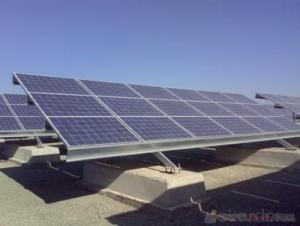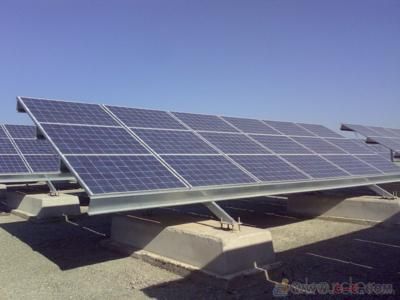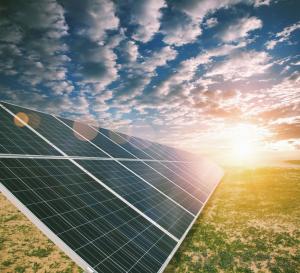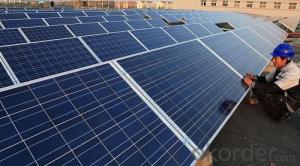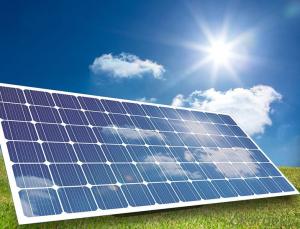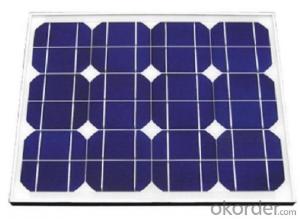Photovoltaic Pv Solar Cells - Monocrystalline Silicon Solar Cell Solar Panel 250w in China Good Price
- Loading Port:
- China Main Port
- Payment Terms:
- TT OR LC
- Min Order Qty:
- -
- Supply Capability:
- -
OKorder Service Pledge
OKorder Financial Service
You Might Also Like
Quick Details
| Place of Origin: | Model Number: | ||||
| Material: | Size: | Number of Cells: | |||
| Max. Power: | VOC: | cells: |
Packaging & Delivery
| Packaging Detail: | 22pcs/carton 264pcs/20ft container 672pcs/40ft container |
| Delivery Detail: | within 5 working days |
Specifications
1.250W Monocrystalline silicon solar panel
2.CE,ISO certification
3.excellent in quality and reasonable in price
250W Monocrystalline silicon solar panel/modules
1)High efficiency and good workmanship
2)excellent in quality and reasonable in price
3)High transmission rate,low iron and tempered glass
4)solar panel have high wind,easy installation and long life
5)Life time:20-25 years
6)Tempered glass laminated with aluminum frame
7)Construction
a)Front:high-transmission low-iron tempered glass
b)Back:TPT
c)Encapsulant:EVE
d)Frame:aluminum
e)Certification:CE ISO9001
- Q: Can solar cells be used for indoor applications?
- Yes, solar cells can be used for indoor applications. However, their efficiency is significantly reduced compared to outdoor use due to limited access to direct sunlight. Indoor solar cells can still generate electricity from artificial light sources, but they are typically less productive and may require additional lighting to optimize their performance.
- Q: Can solar cells be used for indoor lighting?
- Yes, solar cells can be used for indoor lighting. However, they are generally less efficient indoors compared to outdoor environments due to the reduced amount of sunlight available. Additionally, indoor lighting usually requires a constant and reliable power source, which may be challenging to achieve solely through solar cells.
- Q: How do solar cells perform in areas with high levels of bird droppings?
- Solar cells may experience a decrease in performance in areas with high levels of bird droppings. The droppings can create a layer of dirt and debris on the surface of the solar cells, reducing their efficiency in converting sunlight into electricity. Regular cleaning and maintenance are necessary to ensure optimal performance in such areas.
- Q: How do solar cells handle electromagnetic fields from power lines?
- Solar cells are not affected by electromagnetic fields from power lines as they are designed to convert sunlight into electricity and not sensitive to external electromagnetic interference.
- Q: We are currently promoting our one of our solar cells seriers, which is the 156mmx156mm 6inch,2BB/3BB polycrystalline/multi solar cells,mono solar cell,made in Taiwan/Germany, please feel free to contact me if any interest.
- Are the dimensions accurate? Can it be tailor-made if I want a different size? Maybe you can send me more information?
- Q: Can solar cells be used to power water treatment plants?
- Yes, solar cells can be used to power water treatment plants. Solar energy can be converted into electricity using photovoltaic technology, which can then be utilized to power the various systems and processes involved in water treatment, such as pumps, filters, and disinfection systems. Solar power offers a sustainable and environmentally friendly solution for powering water treatment plants, particularly in areas with abundant sunlight.
- Q: What's the relationship between solar energy materials and solar cells?
- There are solar cells made of many different kinds of materials, for example: Silicon thin film, compound semiconductor thin film and organic thin film shape, hundreds of compound semiconductor thin film shape and non crystalline shape (a-Si: H, a-Si:H:F, a-SixGel-x:H) III V family (GaAs, InP), II VI (CDS) and zinc phosphide (Zn3P2).
- Q: Can solar cells be used in telecommunications systems?
- Yes, solar cells can be used in telecommunications systems. Solar cells can generate electricity from sunlight, which can be used to power various components of telecommunications systems such as base stations, repeaters, and communication towers. This reduces reliance on traditional power sources and provides a more sustainable and cost-effective solution. Additionally, solar cells can be easily installed in remote locations where grid power is not available, making them an ideal choice for extending communication networks in rural or off-grid areas.
- Q: How does the solar cell work properly?
- It has to follow certain scientific steps to make it work properly.
- Q: Can solar cells be used in electric grid stabilization?
- Yes, solar cells can be used in electric grid stabilization. Solar power can contribute to stabilizing the electric grid by providing a consistent and reliable source of renewable energy. The excess energy generated during peak sunlight hours can be stored in batteries or fed back into the grid, helping to balance the supply and demand. Additionally, solar power can reduce the reliance on traditional power plants, thereby reducing the risk of grid instability caused by disruptions in fossil fuel supply or sudden variations in demand.
Send your message to us
Photovoltaic Pv Solar Cells - Monocrystalline Silicon Solar Cell Solar Panel 250w in China Good Price
- Loading Port:
- China Main Port
- Payment Terms:
- TT OR LC
- Min Order Qty:
- -
- Supply Capability:
- -
OKorder Service Pledge
OKorder Financial Service
Similar products
Hot products
Hot Searches
Related keywords
